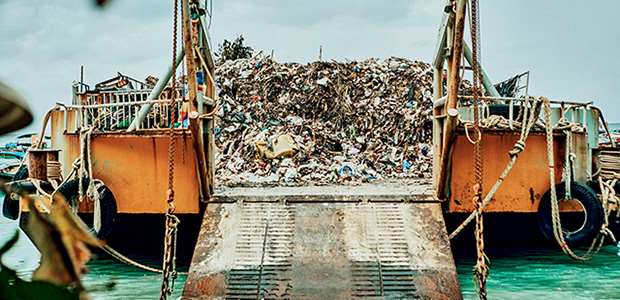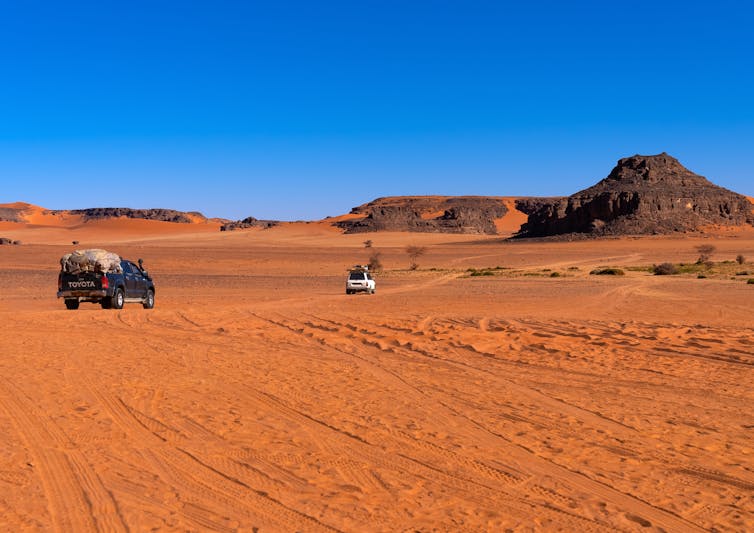The United Nations describes the climate crisis as a $1 trillion challenge. We must shift toward a more sustainable future, and to do that we need the financial solutions that will support that transition. It is a need that is not being met – in part, because addressing the crisis has not become the priority it needs to be.
But the climate crisis is not the only challenge ahead. The Covid-19 pandemic has exposed wider sustainability issues that demand urgent attention, leaving governments and companies scrambling to find solutions for everything from optimising water usage and reducing carbon emissions to supply chain management and worker rights.
To tackle such a momentous challenge, we first have to realise that we need to do more, and the Covid-19 pandemic has been a catalyst for that. “The good aspect of the pandemic has been the moment of reflection,” says Dr Roland Mees, director of Sustainable Finance at ING. “We have been forced to reflect on our situation.”
Next, we need to make a coordinated effort to find tangible solutions. Over the course of the pandemic, for example, the public and private sectors worked together to produce and roll out vaccines in record times. This showed that when a problem is prioritised, it can be addressed at speed.
When it comes to the wider climate and sustainability issues, it is this kind of coordinated effort, along with tangible solutions such as finance going to companies and projects that can demonstrate a positive impact on the environment and society, that will accelerate the transition to a sustainable future. “There is really an immense drive now towards sustainability” Leonie Schreve, global head of Sustainable Finance at ING
Sustainable business is better busines
At a business level, there is a clear imperative to urgently pursue sustainability targets. Research published by ING in April, based on a survey of 100 institutional investors and 450 companies, found that 72% of investors are setting themselves increasingly ambitious targets on environmental, social and governance outcomes in their portfolios. They want to show that they are responsive to their stakeholders’ concerns.
For investors, investment success in sustainability means having access to a more transparent set of tools for assessing whether the sustainability ambitions of companies they seek to lend to are realistic. For those companies, success means being able to access sustainable finance solutions that are relevant to their goals, while being transparent about their performance as they pursue those goals.
Leonie Schreve, global head of Sustainable Finance at ING, says that one of the principal drivers for borrowers looking to access funds from the sustainable finance market is the growing belief that “sustainable business is better business”. Sustainability is increasingly proving to offer a competitive advantage: analysis by the Boston Consulting Group, for instance, finds that sustainable business model innovation helps companies to create “environmental and societal surpluses” that drive “business advantage and value creation”.
There is intense demand from stakeholders too for companies to address environmental, social and governance (ESG) issues. Last year, for instance, Legal and General Investment Management issued a warning to companies to do more to meet climate change targets or face consequences. For these companies, adopting a sustainable business model now can help to future-proof themselves.
In part, this is why despite the disruptions brought on by the Covid-19 pandemic in 2020, a 13% rise in green bond issuance to $305.3 billion from the previous year was accompanied by a surge in the sustainable debt market more broadly. Issuance climbed to $732.1 billion for the year, up 29% from 2019. Global sustainable debt issuance is on track to surpass $1 trillion this year, allowing it to make up a greater share of the overall debt market.
“We’ve already seen an uptake of sustainable finance in the past couple of years, but I think last year started a rethink about ‘How should we do things differently?’,” says Schreve. “There is really an immense drive now towards sustainability.”
The market: A look at sustainable finance solutions
What both lenders and corporates need is a clear blueprint to work from. Among the solutions that have gained traction in recent years are sustainability improvement loans, also known as sustainability-linked loans.
Mees, who was the architect and initiator of the loan, which first launched in 2017, says that with these arrangements businesses are offered a meaningful incentive to meet their targets – this typically works as a “nudge” for them. These loans offer businesses lower interest rates if they meet ambitious targets. If they fail to meet those targets, the interest rates will go up.
There is an awareness that these variable-rate loans can be used for “greenwashing” by companies that want to appear to be doing the right thing – unless the lender sets clear criteria. One way for lenders to avoid this is to assess the company’s sustainability rating based on a score given by an external agency.
These agencies typically assess businesses on their impact on a range of areas, such as biodiversity, energy efficiency, water management and social supplier standards. Investors also have other ways to assess companies, such as the work of the Sustainability Accounting Standards Board. This applies industry-specific measures of success to individual companies, while accounting for both financial and non-financial data.
With the widening sustainability issues facing companies, other specific financial instruments have seen a boom in popularity. In 2020, so-called social bonds proved to be a highlight in the sustainable debt market, because companies used them to tackle the pandemic’s human problems: $147.7 billion of social bonds were issued in the 12-month period – a staggering 720% increase on the previous year. In the first half of 2020, for example, regular issuers in the green bond market such as the Korean Development Bank and the African Development Bank focused their attention on social bond financing to mitigate the Covid-19 pandemic.
“We see a lot of interest in solutions where we can really accelerate specific social investments,” says Schreve. “During the first months of the pandemic we also issued the first social Covid-19 bond to support investments in healthcare, social housing and employment.” Here, banks can play a proactive role in developing new solutions to support sustainable transformation. Financing the transition will be accelerated when lenders actively develop financial solutions that support clients with sector specific needs.
Profit and purpose
The explosive growth in the sustainable finance market has had clear benefits. ING’s April research found that 73% of companies which say they have issued sustainable finance instruments have improved their ability to implement robust metrics for performance. Accountability is now less an abstract ideal and more a measurable part of strategy. “Traditionally, companies have mostly thought about how to make a profit, but this forces a different way of thinking.”
But to maintain momentum, corporates will need to realise that this accountability is not just a box-ticking exercise but something that can support them financially: profit can come from purpose. For Marieke Blom, Chief Economist at ING Netherlands, in the next five to 10 years companies have to “really understand their relationship with society and the planet”.
“It will force everyone making strategic decisions within a company to ask ‘How exactly do I relate to something?’,” she says. “Traditionally, companies have mostly thought about how to make a profit, but this forces a different way of thinking.”
The widening of the sustainable finance market will support executives in achieving their purpose while making a profit. Two-thirds of companies surveyed by ING say that the greater variety of products now available alongside green bonds has made the sustainable finance market more relevant to them and their goals.

On the ground: How sustainable finance is put to use
According to Schreve, sustainable finance is something you now “see everywhere”, but there are some sectors where an urgency for change is driving a growing number of requests from executives keen to see what is on offer.
One company that has been able to tap into sustainability-linked loans to support its sustainability goals is Aligned Energy, a US data-centre company.
As the pandemic accelerates trends such as remote working and cloud computing, data centres have become increasingly important parts of global infrastructure, which puts their electricity usage and renewability under the spotlight. The energy consumption of data centres is significant: some of the world’s largest use the same amount as 80,000 homes.
It is why Aligned Energy has taken a proactive step to secure a $1 billion loan made up of a $250 million revolving credit facility, a financial tool that allows the company to repay the loan in a flexible manner, as well as a $650 million term loan and a $100 million delayed-draw term loan. To ensure accountability, the loan to Aligned Energy is structured with sustainability KPIs based on principles set by the Global ESG Benchmark for Real Assets. This is supporting the company’s mission to match 100% of its annual energy consumption to zero-carbon renewable energy by 2024.
According to Anubhav Raj, Aligned Energy’s Chief Financial Officer, the loan will also help it to set a “best-in-class example for the data-centre industry with respect to environmentally and socially sustainable growth“.
Sustainable finance is also being used in the implementation of the circular economy – a system based on the principles of “designing out waste and pollution, keeping products and materials in use, and regenerating natural systems” by decoupling economic activity from the consumption of finite resources, all while redefining growth to focus on positive society-wide benefits.
“The circular economy is a means to an end,” says Blom. “The end of the circular economy is to limit the harm, for example, to biodiversity or the climate or to reduce pollution. From a planet perspective it’s necessary to begin working in a different way.”
One company that has recognised this need is multinational drinks and brewing company AB InBev, which has signed a $10.1 billion sustainability-linked revolving credit facility – the largest deal of its kind – with a consortium of 26 global financial institutions.
The deal’s initial five-year term is aimed at supporting a number of the company’s goals, including its mission to increase the amount of recycled content used for its packaging. It incorporates a pricing mechanism designed to incentivise the company to reach its 2025 goals of 100% of products being in packaging that is “returnable or made from majority recycled content“.
The sustainable finance market is relatively young, but Leonie Schreve sees these emerging deals as clear motivators for Aligned Energy and AB InBev’s peers to follow suit. They will need to, because financing the transition to a sustainable future will separate those set to thrive from the rest.
“If you’re leading on sustainability, then you make yourself resilient for the future,” says Schreve. “If you don’t take any action, you will be out of business.”
Courtesy: Environmental Finance






















